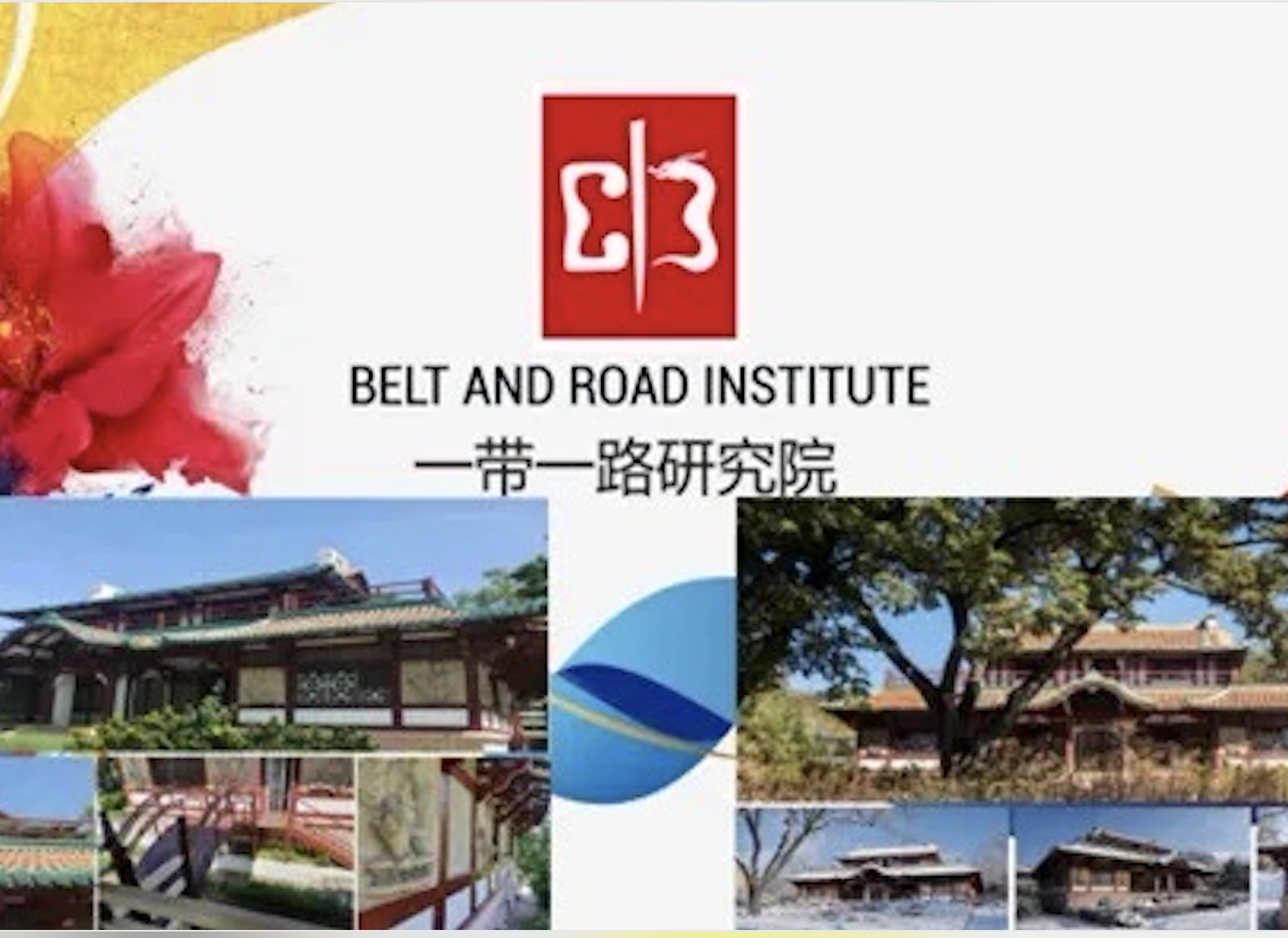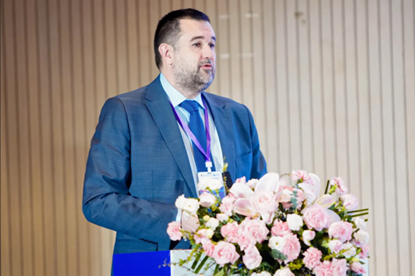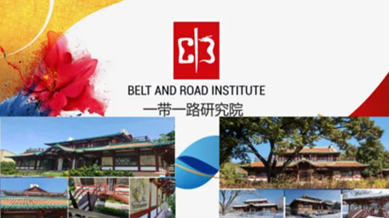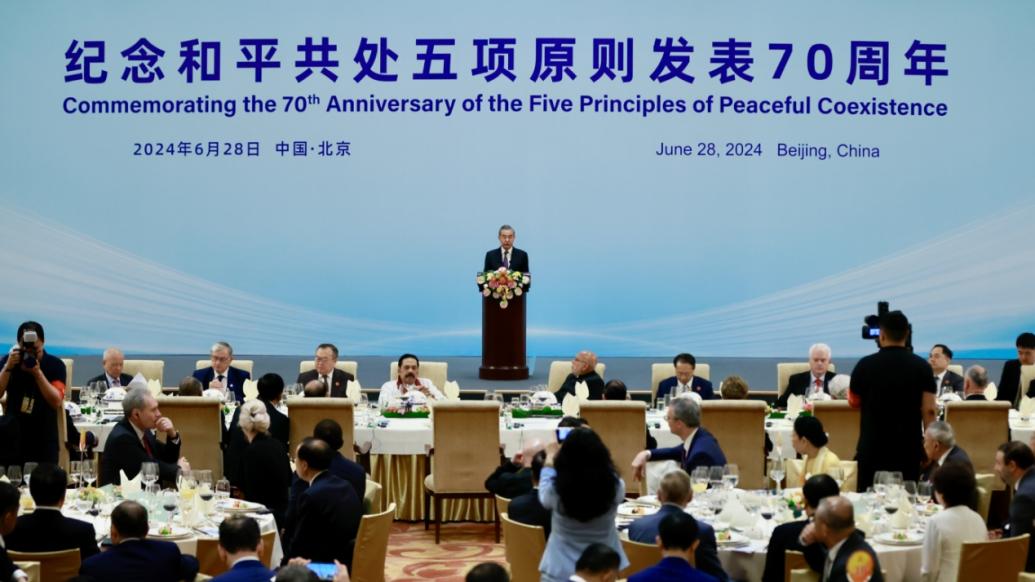
By Bojan Lalić
Belt and Road Initiative cooperation, a common vision for the next decade between China and Serbia
What kind of historical opportunities do we have, and what period are we in now? The Belt Road Initiative (BRI) is celebrating its first ten-year development milestone. At the same time, Serbia wants to seize this opportunity to deepen the potential of BRI cooperation further.
However, there are a few points that must be mentioned. Although Serbia is not significant in terms of territory or population, when discussing the first decade of development, around 2013, we need to consider the environment at that time. What kind of decade was it? There was already an excellent atmosphere, leading some to conclude that it was indeed a great time. But is this an overestimation? Nevertheless, when Serbia and the Chinese embassy signed agreements at that time, it was in a very beautiful and harmonious atmosphere. Later, there was a considerable shift in the environment. To illustrate this change, I use these two flowers as analogies; on the left is jasmine, a tropical flower suitable for relatively mild climates, and on the right is runolist, a local Serbian mountain flower requiring relatively low temperatures. How can we make both tropical flowers and mountain flowers bloom? During this process, we should not be overly pessimistic or negative.
Once the Silk Road, Now the Belt and Road.
Many people argue that great powers are hypocritical and smaller countries can only adopt a pessimistic and negative attitude. We need to critically examine such a statement and the changes happening in the world, considering the historical factors behind them. Historically, there was the Silk Road, and now there is the BRI. Let us first discuss the origins of the Silk Road. It was not only about connecting facilities but also about connecting the Eurasian continent. Serbia sits right at the intersection of trade routes. We have always emphasized the importance of connecting people’s minds and the roads between countries, among other connections between people and things. Today’s BRI should also have these characteristics; only in this way can the spirit of the Silk Road be used to achieve today’s objectives. In the past, goods such as textiles and minerals were transported via the Asian Silk Road, and these activities continue today without significant changes. However, we are now at a major juncture where we have not only the exchange of goods but also the integration of cultures. Therefore, today's Baichuan Forum is crucial as it provides a platform for the exchange of ideas and mutual learning between civilizations. I must thank the previous speaker, Professor Yu Jiantuo, who highlighted the exchange between Christian civilization and other civilizations, a point which I particularly agree with because cultural exchange and mutual learning have always been highly valued. All ideologies, including Christianity, aim to improve human society. Therefore, we must believe in and support the exchange of ideas and mutual learning of civilizations.
Second, the ancient Silk Road comprised both the land Silk Road and the maritime Silk Road. The maritime Silk Road influenced the development of the land Silk Road to some extent because maritime transport was more cost-effective than land transport. Although the rise of the maritime Silk Road somewhat affected the prosperity and status of the land Silk Road, it also introduced developments because of its convenience. For example, after the maritime Silk Road emerged, some foreign diseases spread via maritime transportation, but I will not delve into this issue in detail here. In the face of pandemics or other major challenges, we should be more united and collaborate to explore many issues and find solutions.
Last, we should base our discussion on facts, many of which might be underestimated or overlooked. Regarding China’s development, there have been numerous successes, which is why I am optimistic about the future of our cooperation. We recently conducted a study in Serbia and found that many people are shortsighted, similar to the parable of blind men and an elephant, where individuals perceive only parts but not the whole picture. Many people see the BRI only as connecting individual cultures without seeing the comprehensive impact of connecting these points. In Serbia, we have proposed an initiative emphasizing cooperation with multiple regions to achieve the effect where the whole is greater than the sum of its parts, which aligns closely with the principles of the BRI.

Bojan Lalić speaks at the Baichuan Forum (Image source: Organizer)
"Belt and Road" Initiative: A Major Path Guiding Future Development
We need to create synergy because only through collaboration can we achieve better development. After all, no one can exist as an isolated “island.” At the same time, we need to understand history deeply and use historical thinking to guide current decisions. To understand this history, it is essential to thoroughly study the instructions given by President Xi Jinping at the Third Belt and Road Forum for International Cooperation. These instructions outline eight measures to guide us in jointly pursuing high-quality development in the new era of the BRI. We hope that studying President Xi’s instructions will pave the way for future development.
First, we aim for a multidimensional BRI connectivity and hope to make further progress in this area. Over the past ten years, our primary cooperation has been infrastructure construction, with significant infrastructure projects in many BRI countries. For example, the China-Europe Railway Express (AKA Trans-Eurasia Logistics), significantly reduces travel time. Previously, my commute took a long time, but now it only takes half an hour to get to the office. This improvement is a practical benefit of the BRI. Other examples include the Gwadar Port in Pakistan, the Hambantota Port in Sri Lanka, and various pipelines in Europe. All these infrastructure projects lay a foundation for further regional development and prosperity.
Next, it is worth mentioning the open economy, especially now with the concept of the Digital Silk Road, whose development is poised to be even more rapid in the future. Currently, many small projects are also in their early stages. Along the BRI, our aim is not only for the initiative to spread but also to benefit countless households and industries, particularly in economic and various other dimensions. For example, the Luban Workshop emphasizes the exchange of knowledge and culture. Many of our colleagues in Serbia can learn about China’s advanced craftsmanship and technical spirit through the Luban Workshop.
Another dimension is green development. Earlier, an expert mentioned the United Nations’ Sustainable Development Goals and environmental, social, and governance issues (ESG), which was also emphasized by President Xi. If the BRI initiative had a background color, it would undoubtedly be green. In this process, we must unite to promote green development. In the past, our focus on other development dimensions may have led to environmental damage. Now, we should prioritize green development and protection, aiming to restore the resources taken from nature. Meanwhile, technological innovation can support this process. For example, AI development represents future technological trends. We hope Serbia can seize the opportunities of AI development to reap the benefits of new technologies further.
Additionally, cultural exchanges and human connections are crucial. There is institutional cooperation and the building of institutions. These efforts are part of broader financial initiatives. Specifically, looking at venture capital (VC), which is based on innovation, we plan to utilize it as an incubator to nurture more future technologies.
Over the past ten years, we have established many pillars. Previously, we worked on individual points; now, we want to connect these points into lines and further into surfaces, particularly identifying the cornerstone and support points for future development. Today, we have more resources dedicated to BRI research, and we hope these studies can guide the BRI initiative to flourish in the future. By connecting these points into lines, we hope they can benefit the countries along the BRI, driving overall development, which is the growth we pursue.
We previously emphasized that the first decade of the BRI focused on building infrastructure. In the second decade, we will consolidate this infrastructure, as it is crucial. We hope the infrastructures we built in the first decade can be the foundation for future projects. Additionally, we emphasize innovation and stability. It is essential that no one is left isolated or falls behind in technological trends.
To become the "Shenzhen of Europe."
Next, we move to the case of Serbia. Although the stories come from a small country, they are still worth studying. Today, we are in Shenzhen. We can combine the advantages of Shenzhen with those of Europe. People might consider Serbia to be the Shenzhen of Europe.
We have also signed many exclusive agreements with the EU, as well as agreements with the US, Turkey, and Russia. In this respect, Serbia functions like a special economic zone. Additionally, we have also implemented visa-free policies for many countries, positioning Serbia as a typical representative from which everyone can learn. We have entrepreneurial models from the US Silicon Valley model and the Zijin model (a Chinese mining company developing its industry here). Despite having a total population of just over 5 million, much smaller than Shenzhen, Serbia still presents new development opportunities.
In Belgrade, the foundation of a Chinese Cultural Center marks a significant milestone. It serves as a cultural springboard, making China more accessible to a broader audience. Moreover, our cultural exchanges date back to the last century, and we aim to enhance cultural connections further.
In terms of future industrial parks, we have many initiatives underway. For example, to capitalize on technological development, we have invited American scientific projects and many venture capital or joint ventures. This includes collaborations with Chinese companies and other technology enterprises like Zijin Mining Group and the Confucius Institute in Belgrade, all integral to our robust ecosystem. We aim to draw insights from the Chinese Academy of Science and Technology for Development (CASTED), considering AI technology as a crucial link to foster further technological development.
We plan to start with environmental and ecological considerations. Our efforts are not just about giving back to nature but also nurturing the future. You can also see the Zijin Model. Zijin Mining Group has integrated Serbia into a broader ecosystem by integrating elements like Latin American coffee and our green infrastructure, along with industries like wine, honey, and others. These have all been included in our ecosystem, which benefits local community green development and enhances the entire country’s welfare.
Before the construction of the railway, we had limited opportunity to explore various possibilities in this area further. It could even be said that achieving basic commuting was not feasible. However, the "Belt and Road" initiative has provided us with the opportunity for rapid commuting, which is a very important development.

Belgrade Belt and Road Institute (Image source: Organizer)
The Belgrade Belt and Road Initiative Research Institute was introduced in 2020 by Serbian traders. The institute is 33% owned by the government, 34% by the Chamber of Commerce and universities, and 33% by Chinese companies. This project operates as a Public-Private Partnership (PPP) model, combining efforts from the government, businesses, and academia.
In the future, to better promote Belt and Road cooperation, the research conducted by the Belt and Road Initiative Research Institute will be crucial. Currently, many universities in China host various research institutes and centers focused on the Belt and Road Initiative, which serves as an excellent platform. After attending this conference, I feel that the knowledge I have gained here can be shared back home. The pace of change is very rapid now, so we must learn from each other and keep up with the pace to thrive.

























Leave a Reply
Your email address will not be published. Required fields are marked *